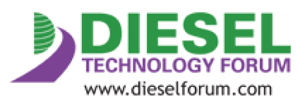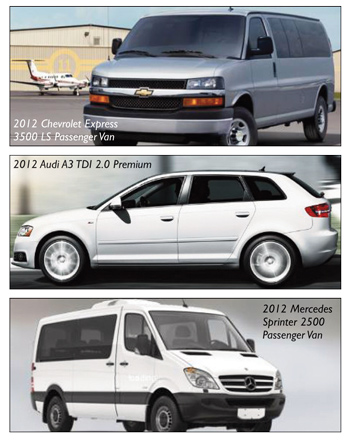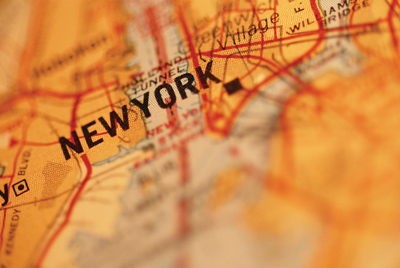
NEW YORK’S ECONOMIC
& TRANSPORTATION SYSTEMS
 |
CLEAN DIESEL TECHNOLOGY POWERS NEW YORK’S ECONOMIC & TRANSPORTATION SYSTEMS |


| Did You Know . . . | More than 118,000 diesel powered machines were used in New York’s construction industry generating over $34 billion and employing 360,000 people in 2008. New York has the largest ferry fleet in the U.S. which is 98 percent diesel powered. New York has more than 50,000 school buses – the largest fleet in the nation – with more than 85 percent powered by diesel fuel. |
From back-up generators that keep hospitals and Wall Street running to the diesel hybrid buses running in cities across the state, diesel engines play a vital role in New York state’s economy. Diesel power brings tourists and goods to the state, harvests crops, builds roads and buildings, fuels emergency vehicles and transports commuters and school children all across the state in a clean, reliable and cost efficient manner. As a diverse state with one of the most important and recognized cities in the world, New York could not function without diesel power.
In recent years, technological advances have brought environmental progress to the diesel industry through a new clean diesel system combining cleaner diesel fuel, advanced engines and effective exhaust control technology. In 2006, ultra low sulfur diesel (ULSD) fuel became available nationwide. This fuel’s 97 percent reduction in sulfur levels not only brought an immediate 10 percent reduction in particulate matter (PM) emissions but enabled the development of more efficient engines and more effective filters. These filters are now standard equipment in new diesel vehicles and can be retrofitted on existing diesel equipment to significantly reduce emissions.
Diesel powers New York's Economy New York State's $53 billion in tourism revenues in 2008 depended directly on diesel powered transportation on air, land and sea transportation. 118,000 diesel powered machines were used by the state’s construction industry in 2008, generating over $34 billion and employing more than 360,000 in 2008. $4.4 billion worth of agricultural products were produced in New York in 2008, ranking 26th in the nation. Approximately 41 million gallons of diesel fuel were used by machines such as farm tractors, combines and irrigation pumps in 2008. Transportation and warehousing accounted for $19 billion of New York's GDP in 2008 ranking 5th in the U.S. and up 30 percent since 2000. More than 15,000 stationary diesel generators are used across all industries in New York providing clean,
Port/Marine Traffic: The Port of New York/New Jersey handled almost 89 million tons of cargo valued at $190 billion in 2008, making it the largest port complex on the East Coast. New York’s historical canal system also plays an important role transporting 13,195 tons of goods in 2007. Finally, New York has the largest ferry fleet in the country (75) which is 98 percent diesel powered. Ground Transportation: 74 million tons of cargo were carried over 3,565 rail miles stretching across the state in 2007. The state also has the 15th largest trucking industry in the U.S. employing more than 40,000 in 2007. Most, if not all, rail and truck transportation is powered by diesel technology. Transit Buses: New York’s five largest cities have more than 7,000 public transit buses - over 83 percent of which are powered by conventional diesel or diesel hybrid engines. In 2005, New York City decided to dedicate itself to clean diesel technology and stop purchasing compressed natural gas (CNG) buses. In December 2007, the Metropolitan Transit Authority purchased 850 more diesel-electric hybrid buses giving it the world's largest fleet of these vehicles. Diesel hybrid buses are also being used in several upstate cities, including Albany, Buffalo, and Ithaca, with plans to order more in the years ahead.
New York has more than 50,000 school buses making it the largest fleet in the country. According to the EPA, more than 85 percent are powered with diesel fuel.
The state has more than 400 aviation facilities including JFK airport which ranked 6th and 7th in the nation for emplanements and cargo shipments in 2008. Aviation services are critical to many industries which depend on the diesel industry such as goods movement, agriculture and emergency services. |
|


Visit www.dieselforum.org for a complete list of clean diesel vehicles currently available in the U.S.
Clean Diesel Passenger Cars Arrive in New York
New clean diesel passenger vehicles that meet the nation's strictest emission standards and qualify for federal tax credits have been available in New York since 2008. New York is one of several states that has adopted California’s standards.
The state’s heavy duty diesel powered pickup trucks saved 10 times more fuel than the state’s passenger hybrid vehicles between 2003 and 2007 ($80 million vs. $8 million).
Nationally, if diesel vehicles made up 15 percent of the passenger fleet, they would save 17 billion gallons of fuel, 413 million barrels of oil and 205 million metric tons of CO2 by 2038.

New York Policymakers Recognize the Value of Clean Diesel Technology
New York City adopted a Clean Fuel Bus program in 2000 and passed Local Law 77 in 2003 which required the early use of ULSD fuel and best available technology for emissions reductions in off-road construction equipment working on city construction projects.
Under a 2005 Executive Order, state vehicles must use at least 2 percent biodiesel rising to 10 percent in 2012.
In 2006, the New York State Diesel Emission Reduction Act was passed setting timelines for using ULSD and retrofitting all state owned heavy duty vehicles and those under contract with the state.
By the end of 2009, the U.S. Environmental Protection Agency had awarded grant funds to retrofit more than 3,000 diesel vehicles in New York.
New York has six Clean Cities coalitions which work to reduce petroleum consumption across the state.

To view references and additional information, visit www.dieselforum.org/newyork
